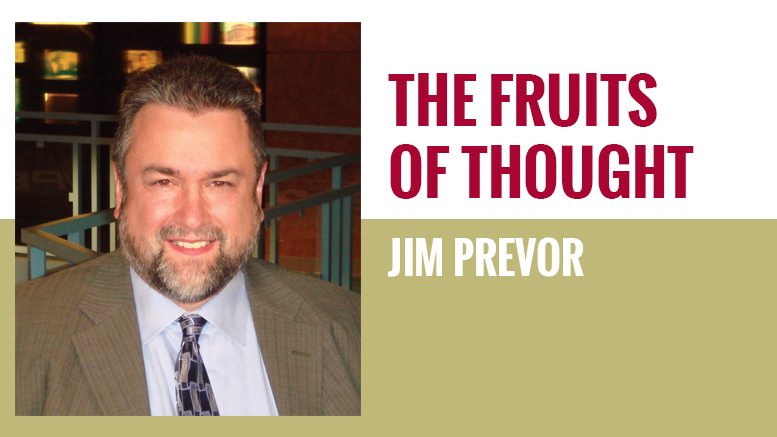Though Lucky, We Are Still Vulnerable
May 6, 2020 | 4 min to read
The article discusses the unknowns surrounding COVID-19, including the reliability of antibody presence and the extent of infections, highlighted by a study in Santa Clara County revealing a potentially lower death rate than initially thought. The Diamond Princess and USS Theodore Roosevelt cases illustrate that many infections are asymptomatic, particularly among younger people. Despite challenges, the produce industry remains essential, although consumer purchasing patterns are changing, underscoring vulnerabilities in society's response to health crises.

Originally printed in the April 2020 issue of Produce Business.
The coronavirus situation is a novel and problematic one, partly because we don’t know many things about COVID–19. For example, with many diseases, such as chickenpox, we know that the presence of antibodies means you can’t get sick a second time — you are immune. We think this is probably true of the coronavirus — at least for a period — but we don’t actually know this for a fact. South Korea has reported a number of re-infections but we can’t be sure if these were illnesses that were never resolved, testing errors or some other thing.
We also don’t actually know how widely spread the coronavirus is in our society. The first-in-the-nation community study of the prevalence of COVID-19 infection was done in Santa Clara County in California. The researchers found somewhere between 50 and 85 times the official count of people who are known to have had the virus actually had the virus and are now producing antibodies to it.
Now, of course, although it wouldn’t seem great to have so many people with a virus, if correct, the numbers indicate that the virus is far less lethal than had been thought. It would indicate a death rate under 0.2%. In contrast, in the 2017-2018 flu season, the Centers for Disease Control and Prevention estimate there were between 9,300,000 and 45,000,000 illnesses and between 12,000 and 61,000 deaths.
But many scientists have attacked the Santa Clara study. The scientists used Facebook ads to attract people to volunteer to be tested, and quite possibly those who volunteered to be tested may have been people who thought they had the virus.
We have two situations that might help us understand the risk of dying from COVID-19. The first is the Diamond Princess — it is a cruise ship, and its passengers were all quarantined on board. As is typical with cruise ships, this was a population that leaned toward the elderly. The case fatality rate was 1%. If, however, we projected the case fatality rate against the actual population age of the United States, the death rate would have been just 0.125%. Though the data is limited — only seven people died out of 700 infected crew and passengers on board, so statisticians tell us the number could be as much as five times lower or higher — or between 0.025% to 0.625%. Then, of course, some might die later.
As food is essential, most companies have been allowed to keep working. Still, there are problems.
The second situation was the aircraft carrier, Theodore Roosevelt. The ship has a crew of about 4,800 people. So far, 615 people have tested positive for the coronavirus. There has been one fatality. We don’t know if the one death was solely a result of the virus or if the sailor had co-morbidities. Roughly half the sailors diagnosed with coronavirus knew of no symptoms. Secretary of Defense Mark Esper explained the situation on the Today Show: “What we have found of the 600 or so that have been infected… what’s disconcerting… is a majority of those — 350 plus — are asymptomatic, so it has revealed a new dynamic of this virus that it can be carried by normal, healthy people who have no idea whatsoever that they are carrying it.”
Indeed, one of the big wins for society is that the coronavirus seems to have little effect on young people. An aircraft carrier is filled with young and healthy people. If the coronavirus is passing through an aircraft carrier and only one person dies — and it is very possible that one person, who was 41 years old, had some co-morbidities — it guides us as to what kind of opening of society might make sense. The 1918 “Spanish flu” killed an estimated 50 million people worldwide, and because it was particularly dangerous for people 15 to 34 years old, it actually reduced average life expectancy in the United States by more than 12 years!
The produce industry has been lucky. As food is essential, most companies have been allowed to keep working. Though the foodservice sector was mostly forced to close when the government closed most restaurants, the larger retail sector grew larger still and provided record business. Still, there are problems. There are signs that retail purchases of produce are dropping, perhaps because consumers are overstocked… perhaps because consumers are hesitant to spend money as they have lost their jobs or are worried about the economy.
In addition, many retailers have reoriented their offers, focusing on essential items. So producers of specialty retail items are languishing, and when restaurants re-open, but with requirements for spacing between customers, fears about going out and credit worthiness of the restaurants may keep this sector depressed for a while.
The bigger issue is that the COVID-19 crisis has revealed a great vulnerability. Even after this, why could it not happen again? And our tools to respond seem difficult. After all, it is easy to say that we would build up reserves of ventilators and masks, maintain extra hospital capacity, buy American so we are not vulnerable to foreign governments… but memories are short.
We can bounce back, but it will require great attention to make sure we are less vulnerable should there be another time around.
15 of 17 article in Produce Business May 2020

